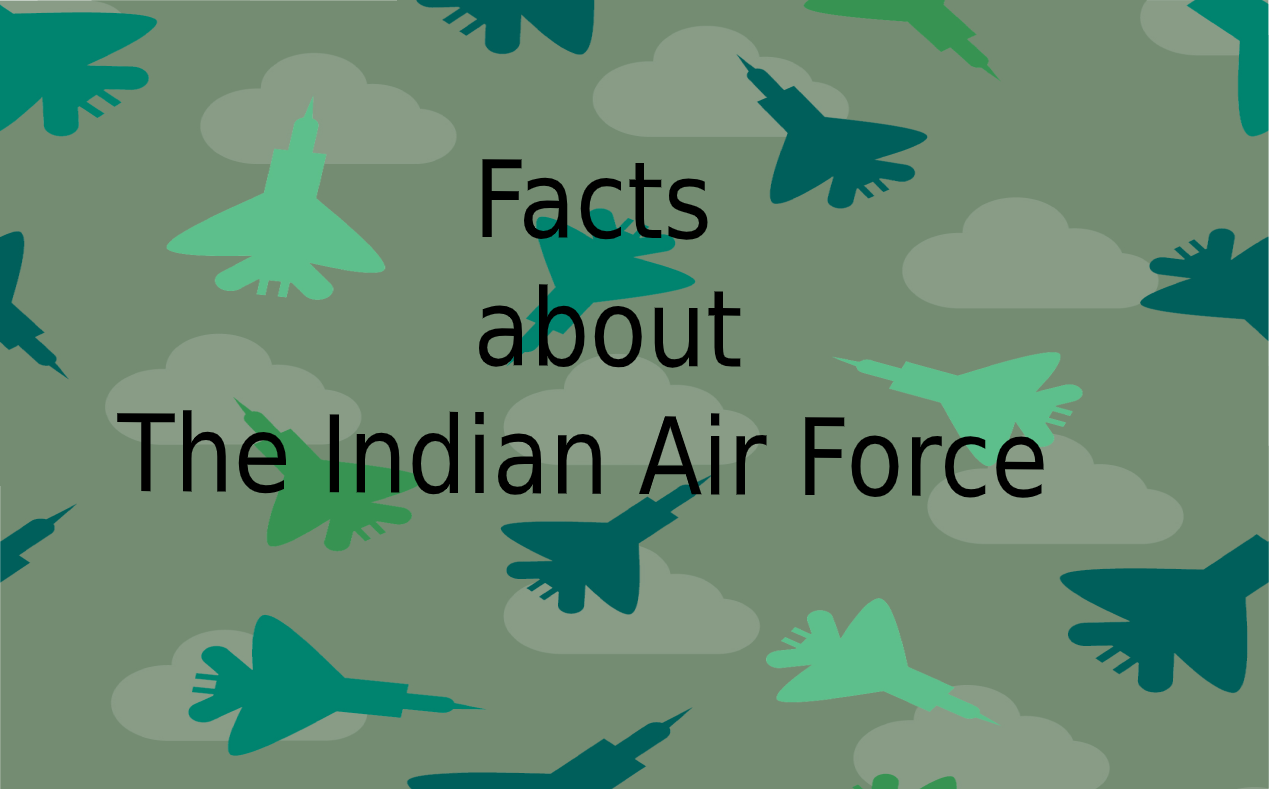The Indian Air Force is the fourth on the list of air forces in the world. The Indian Air Force is one of the leading forces of the Indian Defense Service, which takes care of securing the Indian airspace and conducting aerial combat whenever needed. Here are 10 facts about the Indian Air Force that you definitely got to know. So I’m just gonna go get straight right into the facts.
The Air Force has a total aircraft strength of two thousand eighty-two. It has 520 fighter jets, 694 attack aircraft, 248 transport aircraft, and their trena aircraft that are a total of 360, for their total helicopter strength is 692, and they have 17 attack helicopters in their possession.
The Indian Air Force was the first Air Force to operate fighter jets in Asia. The Indian Air Force inducted the de Havilland Vampires with the number seven squadron known as the Battle Axes in the year 1949, which made the Indian Air Force the first primary aviation based armed forces in Asia to draft contender planes. The vampires served in almost all fighter squadrons of the Indian Air Force for over three decades as fighter bombers as well as reconnaissance aircraft.
After independence in 1947, the Indian Air Force adopted new markings for the fighter aircraft in June of 1948, so that it could differentiate itself from the Royal Indian Air Force markings. The markings used were the Schuckert Chopra on the fuselage as well as the wings of the aircraft. But because these designs were a little too difficult to paint with correct dimensions all the time, they were replaced shortly after by the saffron white and green round dolls.
It was pretty amazing that the Indian Air Force inducted 140 in just a year and a half. So after the 1965 Indo Pak war, the Indian Air Force was heavily modernizing its fleet and the Sukhoi SU seven aircraft was selected. And this was the first Sukhoi aircraft to serve in the Indian Air Force. That acquisition of the planes was done in record time. The Indian Air Force inducted 140 SU sevens in 1.5 years. This equals about eight aircraft per month. And the Indian Air Force raised up six strike squadrons that served during the 1971 Indo-Pak war.
This one is also a history-making to the largest Indian Air Force formation which flew from the Ebola Air Force station from 1987 to 1988, was given the nickname Mammoth Formation. The aircraft that made up the formation were the Canberra bomber aircraft, the MIG-25, MIG-29 at Gede Mirage 2000, the MC-20, the Hawker Hunter, the Jagwar, the MIG-23, and the MIG 21 and F.
So the first major war fought by the Indian Air Force was actually not for the country of India, but rather for the allied forces who are battling the axis forces. The Indian Air Force back then was a supplementary force of the Royal Air Force of Britain, but they played a very important role in World War 2 by blocking the advancing Japanese army in Burma. They also carried out airstrikes against the Japanese forces in Thailand. And it was during this period that the Indian Air Force really expanded and acquired new aircraft.
Fast-forwarding some years following the 1965 war, the Hindustan Aeronautics Limited or HAL, intensified the power of the Indian Air Force by supplying 72 HS-748 and other aircraft today. HAL is considered one of the largest aerospace companies in all of Asia. An Indian Air Force C-119G flying boxcar is a Military transport aircraft used back in the 1960s.
Here, the propellers of it are idle as well as the engine is off and yet it’s in the air, flying. This was made possible only because of the ORPHEUS jet pod, which was placed on the top of its fuselage. The aircraft flew on the power of the pod alone and it was utilized by the Indian Air Force to shorten the takeoff distance, which gave the aircraft short takeoff and landing capabilities. They had an air force also use the J- 34 turbojet engine for short takeoff and India C-119 holds the record for being the first aircraft to take off from the Daulat bagh, with an ORPHEUS pod.
The Air Force’s motto is Touch the Sky with Glory. And that line was actually taken from the 11th chapter of the Bhagavad Gita. Lord Krishna said these words to Arjuna during the Great War of Mahabharata in this particular passage. Lord Krishna is showing his divine form to Arjuna. And this form of Lord Krishna actually reached the sky with glory, invoking fear and baffling the mind of Arjuna. The Indian Air Force aims to overwhelm enemies using their airpower, so the analogy is very fitting.
The last thing to share is that the Indian Air Force also has a special forces unit known as the Guard Commando Force. It was formed in the year 2000 and for the counterinsurgency operations, an emergency unit was formed by the Indian Air Force in response to threats to their airfields. Today, the Guard Command Force has nearly 2000 specially trained personnel, who protect critical Air Force bases. But not just that, they conduct search and rescue operations, as well as help with disaster relief efforts and a whole lot more since being established on October 8th of 1932 as a supplementary air force for the British Empire.
The Indian Air Force has come a very long way. And as their motto suggests, the power and dominance of their air force are nowhere near their full potential.


well articulated, well crafted very informative